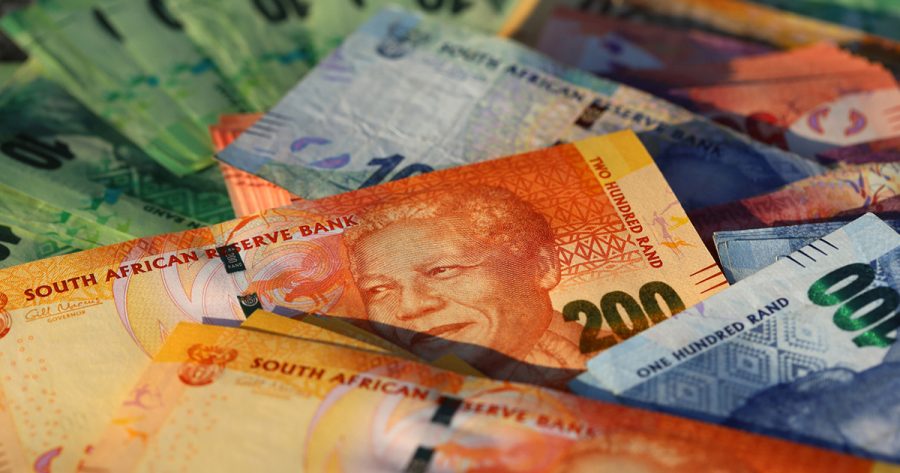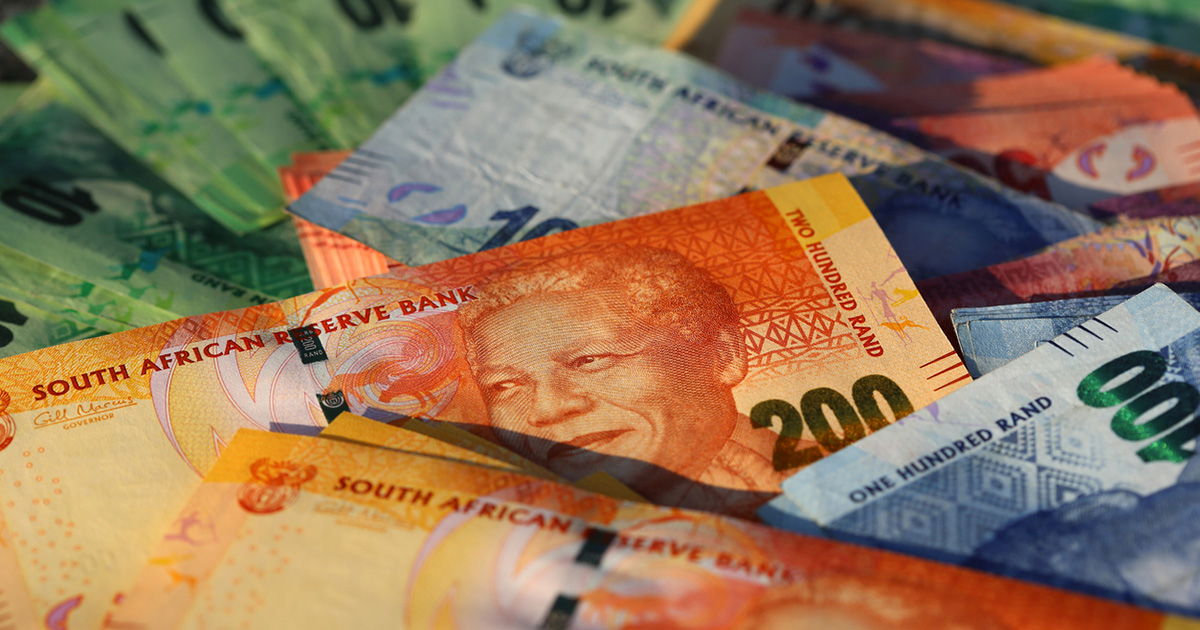
South African Rand strengthened as well as the Dollar fell
Reuters: The South African Rand strengthened on Tuesday following improved local manufacturing output and a weak dollar spurred by expectations of an end to rate hikes in the U.S. SOUTH AFRICAN RAND STRENGTHENED The rand traded at 18.53 against the dollar at 1443 GMT, up 1.3% on its previous close. Data from Statistics South Africa […]

Reuters: The South African Rand strengthened on Tuesday following improved local manufacturing output and a weak dollar spurred by expectations of an end to rate hikes in the U.S.
SOUTH AFRICAN RAND STRENGTHENED
The rand traded at 18.53 against the dollar at 1443 GMT, up 1.3% on its previous close. Data from Statistics South Africa showed the country’s manufacturing output rose by 2.5% year-on-year in May after advancing by a revised 3.6% in April. The rise in output was just the second time this year, following six consecutive months of decline. Thanda Sithole, senior economist at local lender FNB, said that despite the data, the sector’s outlook remains uncertain. “The manufacturing sector remains fragile and clouded,” said Sithole, adding that power cuts, infrastructure failure and moderating demand could weigh down the industry.
ALSO READ: Weekly Rand Report: Rand volatility amidst global developments
In addition, rand strength was driven by a fall in inflation expectations in the United States despite the Federal Reserve saying it could hike rates further. The currency markets are “disregarding the hawkish bias favoured by Fed officials”, said Warren Venketas, an analyst at Daily FX, pushing the greenback down. Shares on the Johannesburg Stock Exchange firmed, led by industrials such as Shoprite and precious metals miners including Impala Platinum and Anglo American Platinum.
The benchmark all-share index ended up 0.58% to 74,775 points while the blue-chip index of top 40 companies ended the day up 0.51% to 69,453 points. The main indexes have lost over 7% since reaching all-time highs earlier this year, driven primarily by a sluggish economy, inflationary pressures and rampant power cuts. Yield on South Africa’s benchmark 2030 government bond was marginally down to 10.725% on strong local data.
ALSO READ: Who are the richest South Africans in the world today? – 11 July 2023
BRITISH POUND
Reuters: Sterling firmed to its strongest in over a year against both the dollar and euro on Tuesday after hot British labour data underscored market expectations of more interest rate rises from the Bank of England. The pound rose as high as $1.2913, its highest since April 2022, and was last trading just shy of that level, up 0.37%. Versus the euro, sterling was at its strongest since August 2022, with the European common currency 0.5% lower on the day at 85.11 pence. Sterling is the best performing major currency against the dollar in 2023, up 6.6% as price rises in Britain prove stickier than inflation elsewhere, prompting traders to bet that the BoE will raise rates higher than other central banks.
Current market pricing indicates roughly a further 140 basis points of rate hikes from the BoE, much more than for the U.S. Federal Reserve or European Central Bank. Higher rates are typically a boost for a currency in the near term, though many analysts say the resulting hit to economic growth will weigh on the pound in the long run. Tuesday data showed a key measure of British wages matched its highest growth rate on record, though the unemployment rate did rise unexpectedly. “The wage data indicated there is more work to do for the Bank of England and second order inflationary pressures are still in the pipeline,” said Jane Foley, head of FX strategy at Rabobank.
ALSO READ; Who is the richest person in the world today? Top 10 list – 12 July 2023
She said while those further rate rises were already in the price, Tuesday’s data had reinforced such views. Sterling’s gain against the dollar was also helped by a broad dollar decline. The dollar index, which tracks the unit against six major peers, including the pound, fell to a two-month low on Tuesday, though U.S. CPI data due on Wednesday could stem that decline if it comes in higher than expected.
GLOBAL MARKETS
Reuters: Asian shares nudged higher and the dollar was at a two-month low on Wednesday ahead of crucial U.S. inflation data that will help gauge whether the Federal Reserve is at the end of its aggressive rate hike policy. The Japanese yen strengthened against most major currencies and last fetched 139.43 against the dollar, its highest in a month. MSCI’s broadest index of Asia-Pacific shares outside Japan was 0.61% higher, while Australia’s S&P/ASX 200 index rose 0.54%. Japan’s Nikkei slid 1%. Economists polled by Reuters expect the consumer price index, scheduled to be released later on Wednesday, to have risen by 3.1% in June, after May’s 4% increase. That would be the lowest reading since March 2021. “This data point probably will not change the Fed’s well-communicated intention to resume hiking at the July FOMC meeting,” Saxo Markets strategists said in a note. “However, if the core CPI decelerates as anticipated, investors may continue to keep the odds for September and November rate hikes low.”
ALSO READ: Newspaper front pages from around the world, 11 July 2023
The core rate is expected to have dropped for a third month to 5% from 5.3%, though that is more than double the Fed’s 2% target. Markets are pricing in a 92% chance of a 25 basis point hike later this month, CME FedWatch tool showed, but remain doubtful of further hikes after that. Fed officials have indicated they expect to hike interest rates by at least another 50 basis points as they tackle persistent price pressures. China shares eased 0.14%, while Hong Kong’s Hang Seng Index rose 0.5% in early trading. On Monday, China extended some policies to shore up the real estate sector until 2024-end, stoking expectations of more stimulus.
Rodrigo Catril, senior FX strategist at National Australia Bank, said a meaningful fiscal spending announcement was needed for the market to become more positive on China. Investor attention will also be on second-quarter earnings this week, with results due from some of Wall Street’s biggest institutions, including JPMorgan, Citigroup and Wells Fargo. Wall Street banks are expected to report higher profits for the second quarter as rising interest payments offset a downturn in dealmaking. Nuveen’s Chief Investment Officer Saira Malik said companies may find it easier to deliver stronger-than-expected second quarter results as analysts had cut estimates in recent weeks. “We are cautious about the self-fulfilling optimism driven by these diminished expectations, we’re mindful of mixed U.S. economic data and the potential for two more hikes this year.”
ALSO READ: ‘Economic sabotage’: Transport Minister condemns torching of trucks
The yield on 10-year Treasury notes was down 1.6 basis points to 3.966%, down from an eight-month high of 4.094% touched on Friday. The dollar index, which measures the U.S. currency against six peers, fell 0.197% at 101.40, having slid as low as 101.37, its lowest in two months. The euro was up 0.16% to $1.1024, having scaled a two month peak earlier in the session, while the sterling hit 15-month peak of $1.2940. The Japanese yen continued its ascent and has risen nearly 4% from a seven-month low of 145.07 it touched last month, a level that put traders on alert for possible intervention from Japanese authorities. The New Zealand dollar was up 0.26% in choppy trading after the country’s central bank kept interest rates unchanged at 5.50%. U.S. crude rose 0.28% to $75.04 per barrel and Brent was at $79.60, up 0.25% on the day. Spot gold added 0.3% to $1,937.99 an ounce, while U.S. gold futures gained 0.33% to $1,937.60 an ounce.
